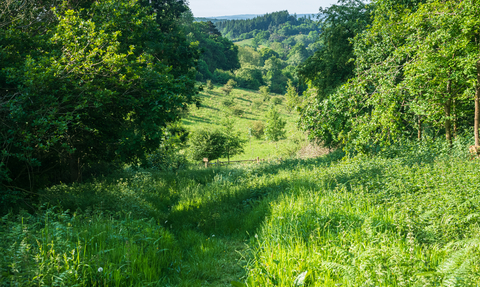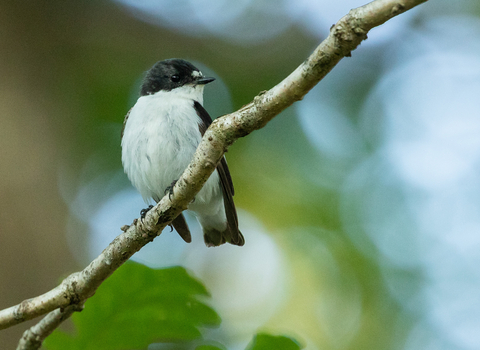
View through Wessington Pasture nature reserve and beyond
Nature Recovery Fund: Landscapes in Recovery
Herefordshire holds within its borders a treasure trove of characterful landscapes, each providing distinct habitats for a wealth of wildlife. However, Herefordshire is a predominantly agricultural county, and, like most of the UK, is seeing increasing development and infrastructure. This activity can all create areas that are inhospitable to wildlife, as well as fragmenting habitats and creating barriers within the landscape. We aim to creating living landscapes with networks of habitats linked by blue and green habitat corridors.
Case Study: Lower Lugg Valley
The Lower Lugg Valley is a key landscape in Herefordshire with habitats including the River Lugg itself, (a Site of Specific Scientific Interest (SSSI)), the Lugg Meadows – historic Lammas Meadows on the edge of Hereford, and a suite of lakes created by the gravel industry including what is now Bodenham Lake Nature Reserve and also Wellington Gravel pits where quarrying is still active.
As well as managing a number of nature reserves within the valley, we have worked with landowners in the area since 2015 to improve habitats. While we have made progress and the landscape includes some lovely places to see wildlife, it remains fragmented and the river is suffering from high levels of pollution.
We need to be able to sustain our work with landowners and join up success thus far to create the Lugg Valley Wetlands, a connected landscape teeming with wildlife.
Nature Recovery Fund
Case study: the Doward
The two limestone hills of the Doward are, today, covered by a wonderful patchwork of habitats, including ancient and secondary woodland, fragments of flower-rich grasslands, old hedgerows and limestone outcrops, and is home to some of the counties rarest plants and animals. The Trust owns and manages seven nature reserves within this landscape. Other sites are owned by organisations such as the Woodland Trust alongside many private landholdings.
While the area is already rich in wildlife, we want to develop a more joined-up approach across the two hills, collaborating more closely with other landholders, to better connect habitats, monitor species and secure more space for nature.
Case study: the Woolhope Dome
The Woolhope Dome perhaps best captures the essence of the Herefordshire landscape. Villages and small farms nestle amongst a patchwork of small fields, woodlands and orchards through which well-worn footpaths wind. Both woods and meadows are botanically rich while abundant hedgerows provide food and shelter for birds and small mammals.
However, like many other places, this landscape and its wildlife is threatened by fragmented habitats, development and the changing climate. It is essential we do more to protect and increase the key habitats of this landscape, not only our six nature reserves here, but on privately owned, and common land. We have begun this work, extending our reserve at Common Hill by 3.1 acres with the purchase of Round’s Meadow in 2020 but we need to expand our work collaborating with, and supporting, other landowners in the area.
Case study: Hereford City
You may not consider Hereford City to be a landscape in the traditional sense but cityscapes also have the potential to be rich in wildlife – which benefits the human residents and visitors too! As well as now managing two key floodplain meadow nature reserves in and bordering the city: Lugg Meadows and Bartonsham Meadows, our Yazor Brooks project team have been working to restore this precious network of city streams over the last few years.
We want to see all of this work link together to create a wilder city cross-crossed with healthy streams, the River Wye and green corridors for wildlife and for people. Our next steps is to broaden our current work to reach new spaces, and more people.

Pied flycatcher (c) Ben Porter
Nature Recovery Fund
More nature, everywhere: raising a million pounds to restore Herefordshire’s wildlife









